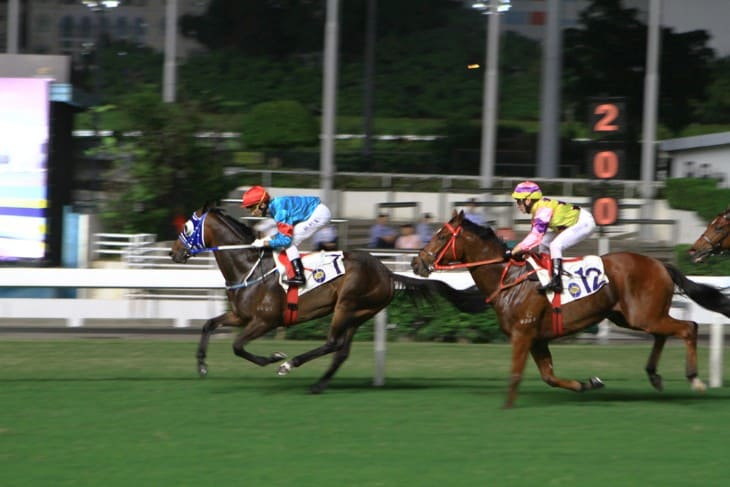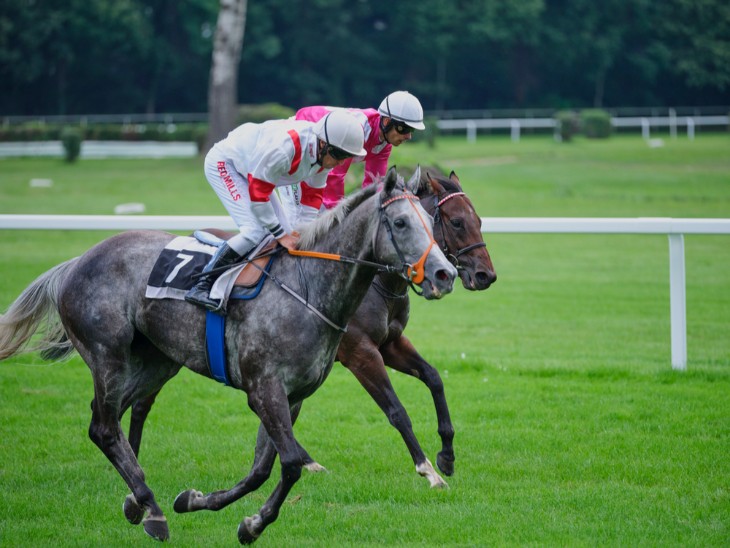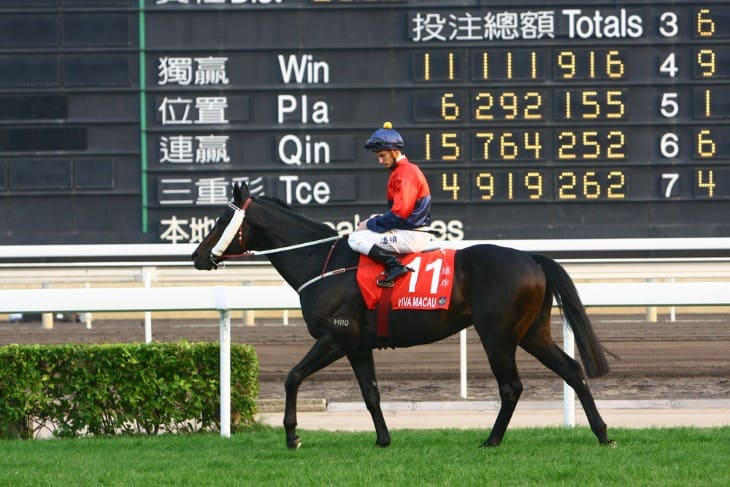In horse racing, a race can be significantly affected by a false start, which may change the race's outcome from the race results to betting returns. For experienced gamblers and those new to the sport alike, it is essential to know how these events happen, why they occur, and what happens afterward. This paper examines the intricacies surrounding false starts in horse racing by finding out some of their causes, dealing with them, and recounting notable occasions that have influenced protocols within this field.
What Exactly is a False Start?
In horse racing, a false start means that one or more horses have moved forward before they are supposed to. This can take place during flat races and jump races, too. In inflatable races, entrants wait behind mechanised gates; if any contender prematurely goes past such gates, then it's regarded as having done so mistakenly, known as false starting, which might require recommencing the entire event or disqualifying the offender from participating altogether.
Jump racing uses simpler methods involving tapes or strings but still follows similar principles: if an individual crosses over this line before its official time, it also counts as another type called the wrong beginning, whereupon all animals will be asked back again so that they can align themselves afresh side by side along the straight track section until reaching the starting point when normal procedure resumes.
Dealing With False Starts
When there has been what is termed hereafter "a fake beginning" at any given moment during equestrian contests, officials must respond fast enough not only to save face but also to safeguard their reputation; otherwise, things might go haywire. How much matter is mainly handled depends on the nature of the respective race under consideration because different measures apply.
A typical approach would entail asking those horses breaking beyond the starting tape ahead of commencement time to come back where they should form up once again, thereby ensuring a fair start among all animals ultimately taking part in the competition held at present while continuing further if necessary until problem persists when decision shall be made whether to adopt standing start for flat racing where mechanical gates are used or disqualify an unruly horse from participating any longer due to inability calm down after initial blunder thereby threatening safety others involved.
Officials also play a critical role in these situations, as they must monitor them closely and think quickly about whether it's worth restarting the race. Their priority is that this event should disadvantage no horse, but nobody must get hurt.

False Start Management
- Starter's Role: In horse racing, the starter's role is to control false starts. They initiate the race by giving a signal. Any horse seen to have run ahead of time must be considered for what they did and if it calls for a false start. If so, all jockeys and their horses should be made aware of this fact so that they can come back and line up again at the starting point, which necessitates clear communication and speed in action to maintain orderliness and safety, among other things.
- Advanced Flag Operator (AFO): Another key person involved with managing false starts is an advanced flag operator, also known as a recall man, whose job is situated along tracks far away from starters. This individual has direct contact with riders who are miles apart from where the race begins, thus ensuring that everybody gets informed about any given fake beginning using yellow flags coupled with whistles, such that all participants promptly stop racing and return.
- Racecourse Management: Racecourse management teams play a significant role in preventing and managing false starts. Their collaborative efforts and coordinated activities are instrumental in ensuring the smooth progression of races. They work together to set up or review various methods employed in starting races and the equipment used at such points, such as gates and tapes. Their aim is not only to reduce but to eliminate the risks associated with false starts, thereby enhancing the safety of the race.
All these roles are interrelated because each one needs other people's support, thus creating an intricate web necessary for a safe and fair beginning of a race; therefore, practical communication abilities combined with quick decision-making skills amongst individuals holding these positions become imperative when faced with complex situations involving fake starts within horse racing events.
Betting Effects
Bets on horses can be heavily affected by false starts. The betting market can change drastically within seconds when a race is restarted due to a false start. If a horse causes or cannot be settled down after an initial breakaway and gets withdrawn from the race, bets placed on it are often refunded because such horse becomes what is known as a non-runner, i.e., it didn't take part in the event as far as betting is concerned.
Moreover, a runner's withdrawal following an incorrect start may result in a Rule 4 deduction for specific winning bets. Rule 4 refers to the reduction made on backings if one or more selections come out before they become losing. The amount deducted varies depending on odds offered when said selection(s) were taken off, thus ensuring that payout reflects altered chances due to the absence of these animals from the field.
However, suppose rules deem that some runners have already begun according to them. In that case, false starts do not affect wagers placed on them even though they might have started ahead of schedule, e.g., bolted out early but continued running till the end .
Maintaining fairness in betting is important so bettors are not penalised or rewarded unfairly because of changes to the racecard after they have placed bets. Being aware of how false starts affect wagers can aid gamblers in making better choices and adjusting their betting plans accordingly.
False Start Incidents That Gained Notoriety
- The Grand National in 1993: The 1993 Grand National is known as one of the most famous false start incidents in horse racing history. Popularly called "The Race That Never Was," it experienced several false starts because of confusion among race officials. In the process, some horses ran the course even though the race was declared void. This situation led to around £75 million being refunded in bets. It also caused changes to be made to starting races to avoid similar problems in subsequent events.
- Kentucky Derby in 2001: In the 2001 Kentucky Derby, a horse broke through the gate before the beginning of the race, resulting in a false start. The situation was quickly brought under control without any significant disturbances following suit, but it highlighted how such races could have far-reaching effects. Therefore, this incident emphasised robust gate technologies and quick responses by gate crew and officials in handling such scenarios to prevent any advantage or harm.
- Melbourne Cup in 2019: During the Melbourne Cup of 2019, there was an almost false start when one particular horse became agitated inside its stall just as they were about to begin racing. It did not happen because personnel at the gates acted fast while the jockey stayed calm, which shows the need for experienced people to handle tense situations at starting points. Additionally, this occurrence indicated the need for constant alertness towards fairness and safety during starts since races may never be won from there.
These incidents illustrate how difficult it can be to manage starts in horse racing while also emphasising continual attempts to ensure safe competitions where no unfair advantage is gained.

Differences between Countries' Regulations
International rules on false starts vary across nations due to various approaches to the sport. For instance, the United Kingdom handles false starts with strict guidelines. In this country, a horse may be declared to have committed a false start if it breaks away before signalling or due to any faulty action of starting gates. The British rules are designed around equity and safety, thus preventing any horse from gaining an undue advantage initially.
In South Africa, however, the starter has more leeway in deciding. If a horse rears up just as the race is about to begin, they can declare a false start to avoid possible disadvantages or safety concerns. Such elasticity safeguards race integrity and participant well-being because many things can happen quickly at the starting gate.
Similarly, in the United States, there are also stringent measures, but with an emphasis on immediate rectification should any horse break through gates before they officially open. These situations are managed quickly by using advanced technology on gates alongside skilled personnel who ensure the least interference with racing events and fairness in betting outcomes are maintained.
These differences show that racing regulations vary across nations worldwide. Every set of rules is made to suit the specific requirements and customs of horse racing within particular regions, hence balancing justice, security, and excitement associated with this game.
Measures of Prevention and Technological Innovations in the Control of False Starts
Racecourses and racing authorities have always worked on strategies to avoid false starts using technology and adopting better methods. Gate technology is at the forefront of these efforts. In this case, gate technology is critical, among other preventive measures against false starts. The starting gates we have today are made such that they are much more reliable than in previous years; this has been achieved by making them sensitive to premature movements, preventing horses from breaking through too soon. Such gates are fitted with sensors that can detect even the slightest movement of any horse, ensuring that all gates open simultaneously for a fair start.
Training for racecourse officials is another area where improvements have been made; starters and their assistants receive comprehensive training on different scenarios encountered at the start, including how to deal with nervous or unruly horses. Starters receive training to enable them to make the right decisions quickly to prevent false starts, thus maintaining integrity within races.
Moreover, some racecourses have started experimenting with alternative ways of starting races to reduce false starts. For example, one may decide to introduce a more structured way of lining up horses before they start off together again, using certain gadgets like monitors that can show whether all horses are properly aligned or prepared for takeoff so as not only to ensure a smooth beginning but also to avoid irregularities during subsequent stages.
Lastly, continuous education programs should be organised for jockeys and handlers who must appreciate why calmness, organisation, stability, etc., are essential during racing. This understanding and practising various techniques to keep horses calm and well-positioned at the starting line can help minimise disturbances for the team behind every racer.
All these steps symbolise an active approach to dealing with complexities related to race starts while aiming to enrich fairness and joy within horse racing events, thus reducing frustrations and financial implications accompanied by false starts.
Conclusion
False starts are uncommon in horse racing, but they can be very disruptive when they occur; this disruptiveness cuts across various aspects of the sport. They challenge protocols, jockeys' skills, trainers' patience, and better foresight. Understanding how false starts are dealt with will help fans and professional insiders navigate the intricacies of betting and racing.
As much as the game advances, so do measures that seek to guarantee fairness and safety during races, thus reflecting an ongoing commitment towards upholding honesty and still keeping thrill alive within horse racing.








